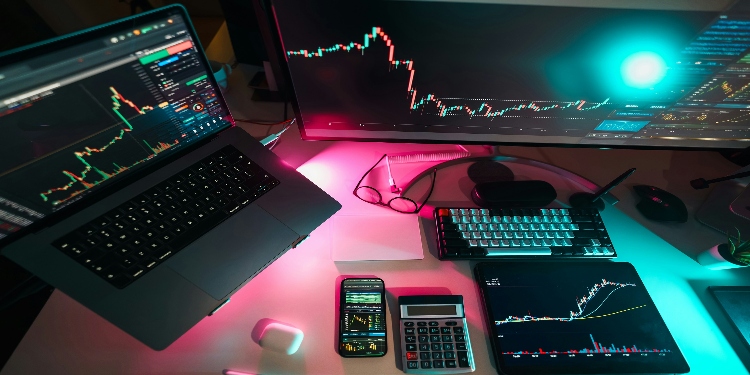Contracts for Difference (CFD) trading has grown in popularity among traders looking to speculate on market fluctuations and potentially make money. CFDs allow traders to enter trades with a lower capital commitment requirement.
Nonetheless, it is vital to realize that CFDs, like any other trading instrument, include inherent risks. Traders can improve their chances of consistent success in CFD trading by implementing methods and risk management approaches. This tutorial delves into verifiable strategies that, when paired with a disciplined approach, enable opportunities to produce revenue using CFD brokers.
Understanding Contracts for Difference (CFDs) and Their Advantages
Contracts for Difference (CFDs) are financial contracts that enable traders to forecast the price movements of underlying assets such as stocks, indexes, currencies, and commodities. The position you take, whether long or short, and the CFD price movement in your favor will result in profitability, whilst the reverse would result in a loss. CFD trading provides leverage that enables you to amplify capital up to 1:300. CFDs are not subject to concerns of expiration, which sets them apart from options.
Key advantages of trading CFDs encompass the following:
- Leveraging positions with restricted capital.
- Access to a diverse range of assets across multiple markets.
- The ability to profit from both upward and negative price movements.
Experienced CFD traders use technical analysis to identify patterns and trends in price charts, rather than fundamental research, which examines a wide range of elements. Technical analysis in CFD trading uses past price data to help traders determine degrees of likelihood.
Key technical analysis skills required for CFD trading
- Identifying support and resistance levels.
- Recognizing chart patterns such as triangles, flags and wedges.
- Implementing moving average strategies.
- Monitoring momentum with oscillators such as MACD or RSI.
- Assessing trend direction and strength.
Charting and analysis essential before market prediction with a trading platform. Look for standard features like lines and color-coded indicators. The objective is not to forecast prices, but to recognize those setups with favorable entry and exit probabilities.
Like any investment, the CFD trader must implement best practice risk management. These are some of the key risk management strategies for an effective trading plan – and for maintaining a clear head:
- Risk per trade: 1-2% of capital, no exceptions.
- Automatic stop losses on every trade.
- Volatility and technical considerations adjust position sizing.
- Consider trailing stops for a rising winner.
- Empowerment or Protection: All trades should have an acceptable risk-reward ratio of at least 1:1
- Asset and sector diversified states of the portfolio.
- Regular profits withdrawn, and losses cut more quickly than ever.
- Only risk capital should be used.
The effective trader is disciplined and adjusts to the weights of his or her own rules, even during tumultuous times. Keep to the long run, as you are reminded. Principally, select a reputable broker for CFD trading. Consider:
- Regulation: Brokers licensed to work with from regulatory agencies
- Fees: Consider the broker’s commission size, spreads and over-night interest rates
- Platform: A degree of mobility and ease of use
- Account choices: Check to see if they offer a demo account addition
- Funding and withdrawals: The broker should provide a choice of withdrawal and deposit methods
- Customer service: Does the broker provide responsive chat, e-mail, telephone support with fast response times?
The first step to trading CFDs with peace of mind is to ensure you thoroughly vet brokers before opening an account. Reputable online brokerage firms, like AAA Trading, cater to CFD traders by providing tailored fee structures, exceptional customer service, and user-friendly trading platforms. When you take the time to do due diligence on brokers, you trade with confidence knowing that your trades will be executed reliably and at market prices.
Demo trading offers a cost-free means of gaining experience trading CFDs before you risk your capital. Most leading brokers provide real-time trading on demo accounts and will set you up with a simulated balance to use for practice.
- To make the most of your demo trading, you should:
- Take it as seriously as you would if real money were on the line.
- Set specific goals and track your results.
- Identify what aspects of your trading strategy are working and what isn’t.
- Practice using sound risk management techniques.
- Work to improve your technical analysis skills.
- Build the discipline and patience you need to ultimately make a real, live trade.
It’s best to demo trade for several months before you switch over to a live account, because the more practice you have, the more confident and skillful you’ll be. You’ll also be more patient and consistent when market conditions get tough. One of the most difficult elements of trading CFDs is keeping your cool when the markets are volatile. This means not responding to your fears with impulsive trading. Discipline means not only refraining from making emotional, gut decisions, but also from making too many of them. You can cultivate discipline as a trader by:
- Respecting the fact that losses are part of trading; pretend you’re a coach not a critic.
- Reminding yourself that your decisions were made based on the information you had at the time, that your trading plan is good, and your choice of broker is fine; make a not-to-do list any time you break a rule.











































































